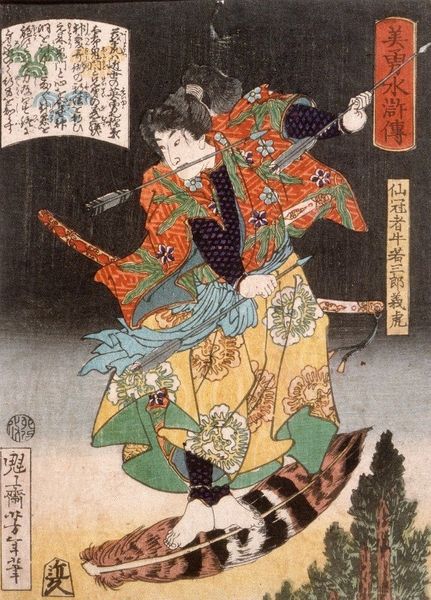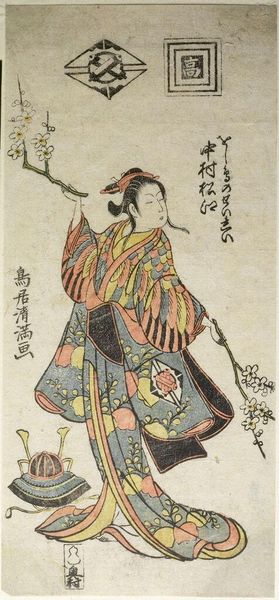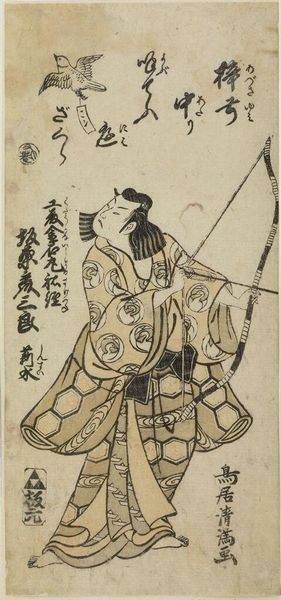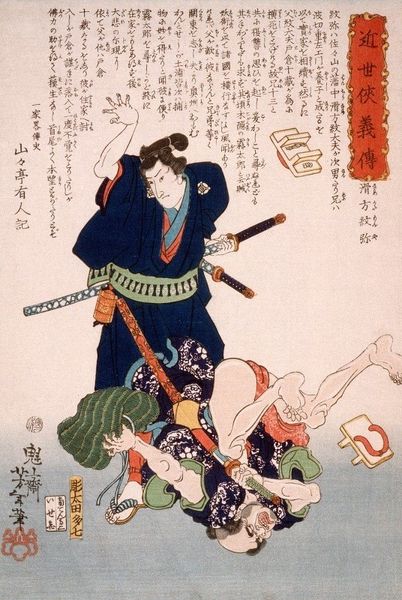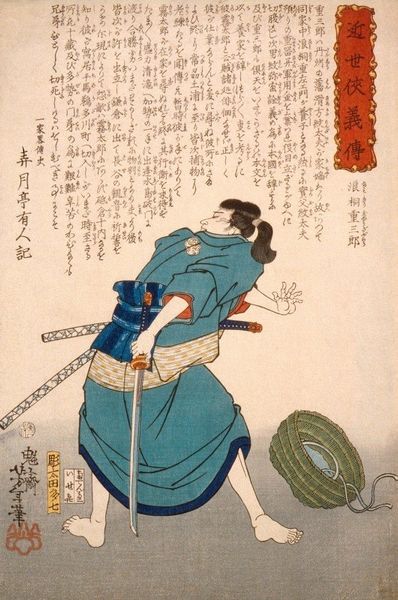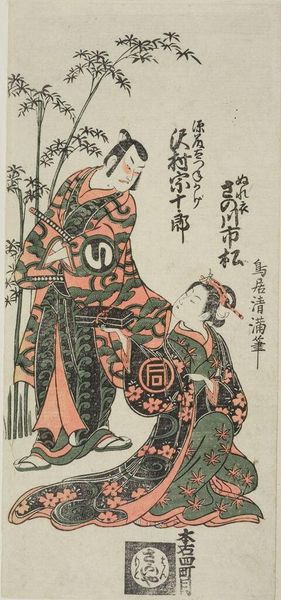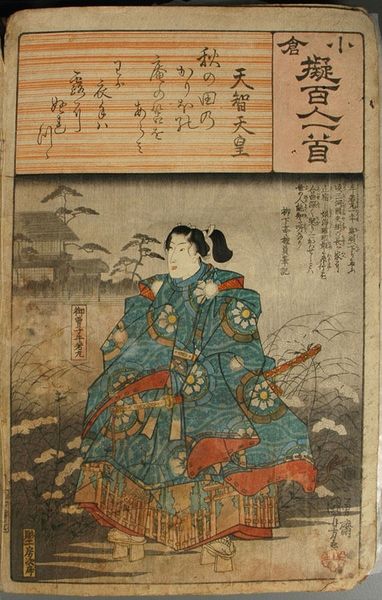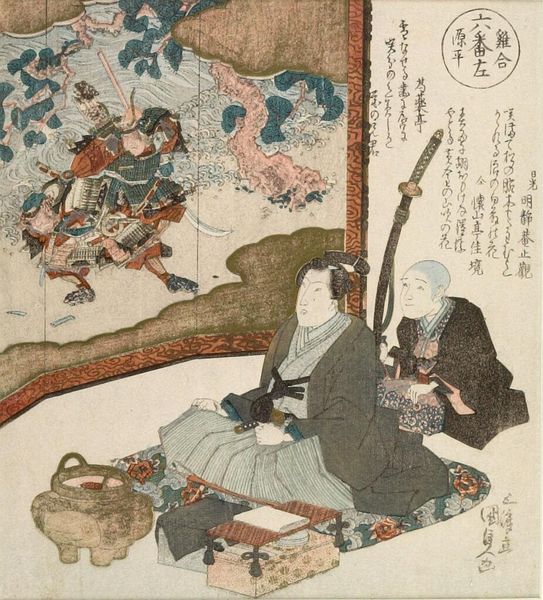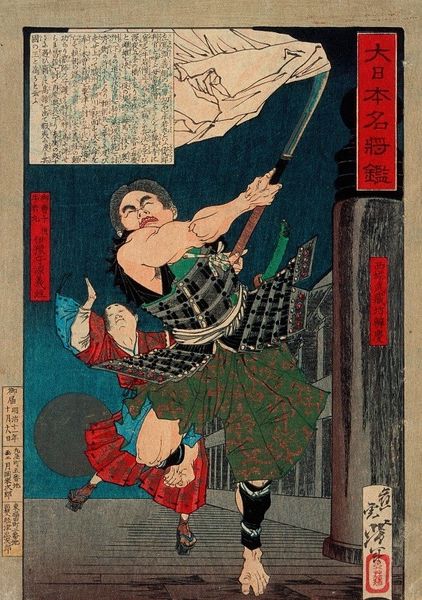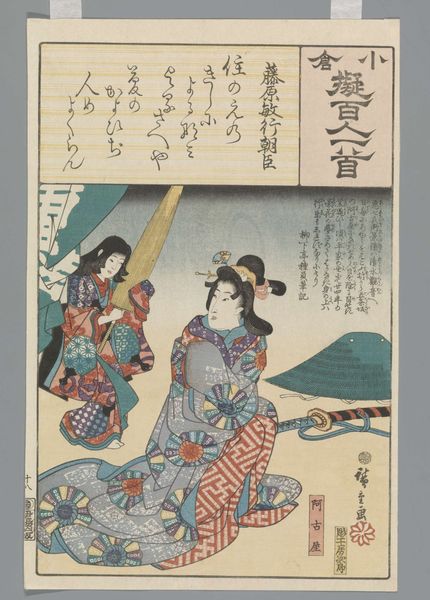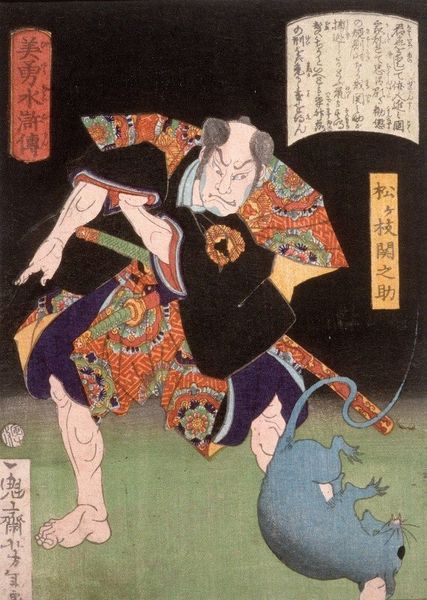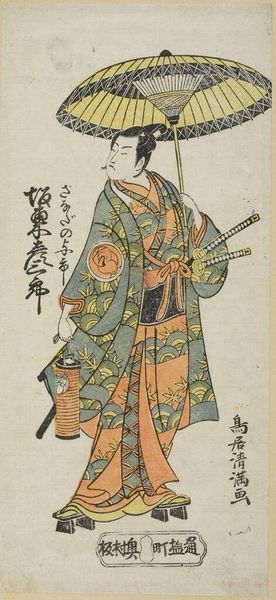
print, woodblock-print
#
portrait
#
narrative-art
# print
#
asian-art
#
ukiyo-e
#
woodblock-print
Copyright: Public Domain: Artvee
Editor: This woodblock print from 1866 by Tsukioka Yoshitoshi, titled "Mashira no Denji Drinking from a Dipper," portrays a lone figure in a detailed setting. The image feels heavy, almost burdened, and there's something somber in the man's posture. What strikes you most about this piece? Curator: It’s a fascinating image because it exists within the evolving world of Ukiyo-e, moving from pure pleasure images toward more politically engaged subjects. How does this print engage with ideas about masculine honor in late 19th-century Japan, do you think? Look at the figure – he is clearly injured, drinking from what appears to be a ritual washing basin or font. Editor: He looks worn down. The injury suggests some kind of physical conflict. So, is he performing some sort of cleansing ritual after a battle, maybe? Curator: Exactly. It invites us to question the codes of honor, the weight of violence. Think about the social context of the Meiji Restoration, underway when this was produced. The old warrior class was dissolving, and its role questioned. The "narrative art" or *musha-e* genre often depicted legendary warriors in exciting battle scenes. This scene instead offers a figure after action: wounded and contemplative. How is he positioning himself to participate in Japanese Society during a key period? Editor: That's an important contrast. I see your point about him having a cultural and political identity. Instead of a glorification of battle, it’s more about the aftermath and the changing role of the samurai class. Curator: Yes, consider the composition and the very public role that these images had. They weren't necessarily trying to celebrate but often to understand and to process socio-political change. We shouldn’t isolate the image from it's intended consumption! Editor: That definitely makes me reconsider the intention of the artist and how society shaped these art forms. Curator: And hopefully that helps us think more critically about the place of art in times of socio-political shift.
Comments
No comments
Be the first to comment and join the conversation on the ultimate creative platform.
